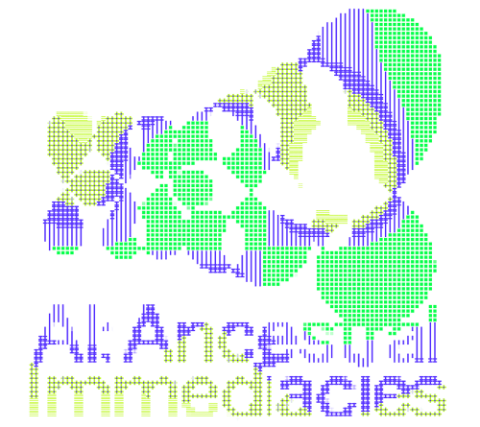AI: Ancestral Immediacies
Technologies of Making the Past Present
Screenings, Performances, Talks, Lectures, Installations
28.–30.7.2023

AI: Ancestral Immediacies presents conversations, performances, and screenings that question the dominant narratives of AI as disembodied, universal, and superintelligent.
Contrary to the technocratic vision of AI that will either dominate or destroy the human, AI—and technology in general—have always been inseparable from cultural histories and human bodies. AI emerges from reductive categories and social truths, its impacts lie not in a distant future, but are felt and sensed already in the present, for example through targeted advertising, or denial of access to housing, work, or state subsidies through biometric misrecognition. As a term that encompasses a set of technological and non-technological practices, AI mediates ‘our’ relationships to time, place, and who we consider within this ‘us’. Which pasts, which bodies are mediated and made intelligible for a future with AI technology? And which tangible and intangible worlds are brought to the fore, which are left unacknowledged? Sitting at the interface of western certainty and quasi-religious beliefs, the ambivalent and shifting modes of understanding AI—and all its fleshy, hidden, generative, and uncertain infrastructure—invite us to reformulate, reimagine, and negotiate what it is. Understanding time as a central paradigm through which AI ‘makes’ sense, the weekend-long program consults circular, ancestral, and quantum time to think about parallel presences and how they might inform our ideas of knowledge and certainty. Reconsidered as Ancestral Immediacies, AI proposes that all ways of knowing the present, and from there all relationships to past and future, are worldmaking practices that are technological and embodied; they need to be understood through their location and moment of emergence, as well as the pasts that shape them. Ceremony, dance, ritual thus become technologies, which not only produce information, but intensify the relation with the world around us, extending it beyond its initial scope.
AI: Ancestral Immediacies positions ancestrality as a technology of collective knowledge, bringing a plurality of pasts into immediacy, which is to say situating the past in the now. Artists, theorists, coders and other practitioners discuss modalities of prediction and building futurity from untravelled and underappreciated pasts and presences, beyond notions of algorithmic certainty. Visual prompts, film screenings and immersive performances complement the discussions, contextualizing AI within a longer history of tech extractivism and socio-technological worldmaking. What technologies of divination and prediction lead into what futures? How are ritualistic practices and technologies of knowledge production based on pattern recognition? And how does technocratic vision impede, extract from, and destroy other ancestral and divine mediations of other futures past? AI: Ancestral Immediacies seeks to mend the disconnect between histories in the plural, the bodies that inhabit them, and the knowledge frameworks they produce to inhabit present worlds.
All events in the programme are in English and will be simultaneously translated on Saturday and Sunday.
AI (Ancestral Immediacies) takes place annually with changing themes:
2025
AI (Ancestral Immediacies): The Collective Brain
2024
AI (Ancestral Immediacies): Alterlife/Afterlife
On Technologies, Consciousness, and Non/Being
Mediathek
Videos and gallery in the HKW Mediathek.